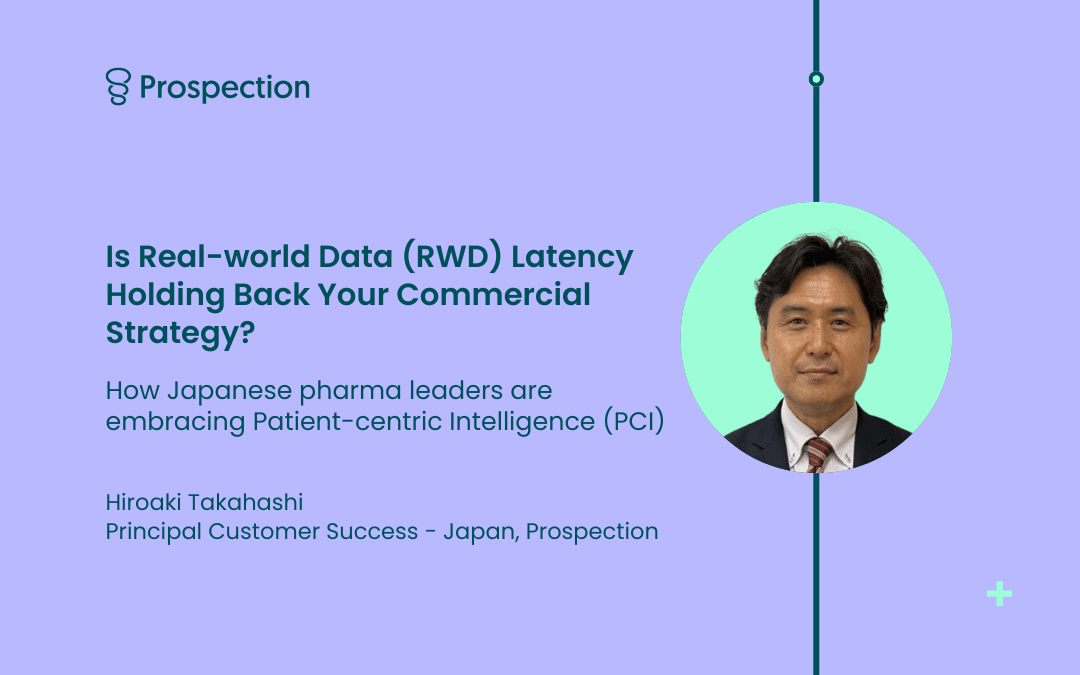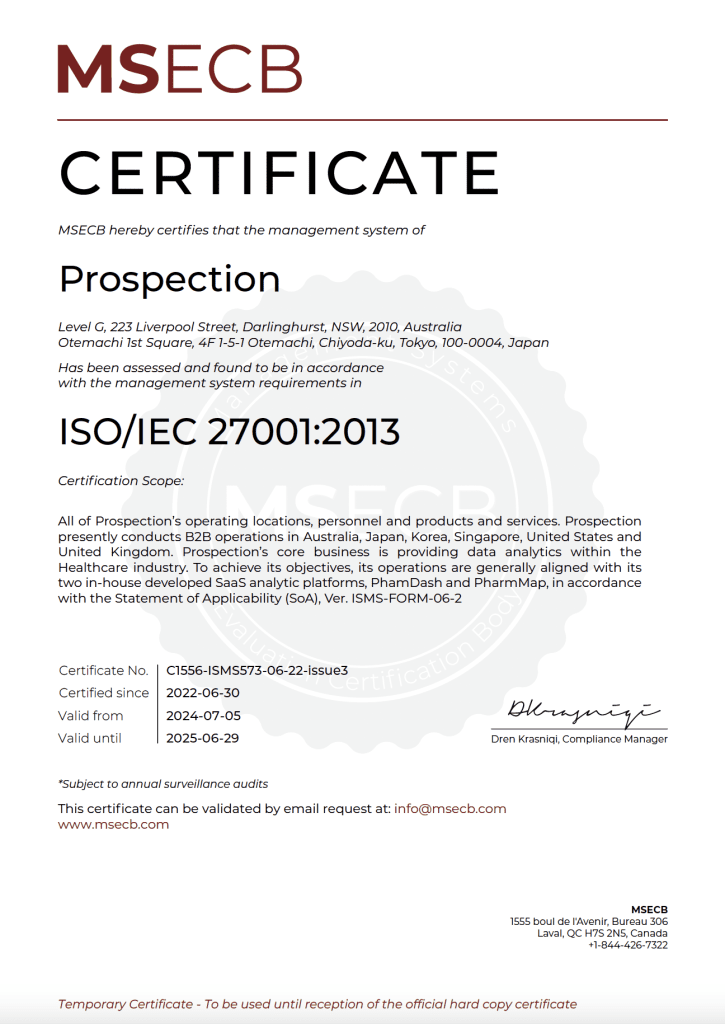Real-world evidence is playing an increasingly important role in healthcare delivery. Nathan Walters, Head of Data and Partnerships at Prospection shares his views on how RWE has evolved over the last decade, bringing a greater clinical understanding of the patient treatment journey.
Introduction
Real-world evidence (RWE) is nothing new. Pharmaceutical companies, clinicians and healthcare payers have been relying on it for decades. However, the analysis of real-world data (RWD) was slow, cumbersome and technically complex, but a lot has changed in the last 10 years.
According to Nathan, there has been a rapid evolution of how RWD is translated into actionable insights.
RWE Yesterday.
Ten years ago, clinicians and pharmaceutical companies alike, were excited at the prospect of utilising RWD data. Australia, was fortunate to have access to a globally unique dataset. The Pharmaceutical Benefits Scheme (PBS) held clean, longitudinal data that could deliver meaningful RWE. The problem was that only a few, highly skilled, statisticians could analyse it, and the process was time consuming, frustrating and, despite all the planning, the outcomes often answered the wrong questions.
By comparison, healthcare data in many other countries was either not centralised or not accessible. In the USA, the data was held across a disparate group of private insurers, hospitals and clinicians. In Japan the information is held in a central database, but the government was, and remains, reluctant to share it.
Often, the commercial holders of healthcare information had much richer datasets. In theory, they could potentially link pathology reports, diagnosis, treatment and outcomes to paint a more comprehensive picture of the patient treatment journey. However, few, if any, grasped the opportunity.
Nathan recalls the first time he saw the Prospection platform in action. “I was working for a pharma company at the time and we wanted to look at persistence and adherence data, information that would normally take six months to gather. The Prospection platform delivered tailored reports, with actionable outcomes, within seconds. They standardised the data and processes, and literally democratised the data.”

The Prospection platform delivered tailored reports, with actionable outcomes, within seconds.
RWE Today
Over the last decade Prospection was able to successfully develop its algorithms and analytics, including its artificial intelligence (AI) and machine learning (ML) capability, because it had access to Australia’s high quality PBS data. At the same time Prospection worked diligently to ensure patients’ privacy was protected. In addition, it developed sound governance policy and procedures that provided transparency and trust in how it accessed and used the meta data.
Today, Prospection’s analytical tools can quickly convert reems of meta data into strategically sound insights to drive: new drug submissions; treatment decision pathways; and strategic brand planning.
There has been a concerted effort, in several international markets, to clean their data, making it more accessible for analysis. Access to richer data sources, like those now available in the USA and Japan, is paving the way for better application of RWE. “The ability to link a patient’s pathology results to treatment outcomes opens up new possibilities in understanding the treatment journey,” said Nathan.

Prospection’s AI and ML capabilities allows for a more sophisticated level of data analysis. According to Nathan, the real power of data analysis today lies in the ability to predict outcomes. For example, it is now possible to compare one patient to many others to determine whether they might metastasise; or determine if a treatment would be effective in a patient that may not necessarily fit the cohort of a randomised clinical trial.
Moreover, the value of Prospection’s predictive analysis extends beyond the clinic and into the marketing and medical functions. Market research is commonly used to gather information on prescriber behaviour, but increasingly, the commercial side of pharma is leveraging the actionable insights from predictive data analysis to drive their strategic market planning, forecasting and brand positioning. In the USA, drug manufacturers have started talking about ‘triggers’ that are uncovered by the analysis of RWD. In some cases, pharma companies can see if their product is not being used according to the label and can use that knowledge to develop more effective education programs, provide more information on clinical decision support or engage more directly with clinicians.
RWE Tomorrow
There is no question that the analysis of RWD has improved significantly in the last 10 years. Randomised clinical trials and treatment registries will remain the cornerstones of evidence generation, but AI, ML and predictive analytics are a superhighway to generating information that will provide more cost effective, clinically superior interventions that reach the right patient at the right time with the right treatment.
The views and opinions expressed in this article do not necessarily reflect the views and opinions of Prospection Pty Ltd.
Prospection platforms are trademark/s of Prospection Pty Ltd or its affiliates. Third-party trademarks used herein are the property of their respective owners.
©2022 Prospection Pty Ltd. All rights reserved.





